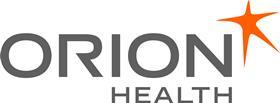The pandemic has demonstrated the potential for digital care. To maximise the benefits of this style of service delivery, healthcare systems will need to unite a range of tools under one strategy. By Andrea Tait
Patient engagement is an area with huge potential for digital transformation. Through the greater use of tools including symptom checkers, self-referral, electronic appointment booking and patient access to health records, it will be possible to improve both patient satisfaction and system efficiency.
Sponsored by
Indeed, the pandemic has already shown how the likes of remote monitoring and virtual consultations can make a real difference to the effective delivery of care.
Often these tools sit separately and are considered separately: one way for people to check symptoms that may be causing them concern, another setup for electronic appointment booking, and yet another means of accessing health records.
It is an approach which should address the quadruple aim of enhancing patient experience, improving population health, reducing costs, and improving the work life of healthcare providers
To make the most of the efficiency benefits such tools can offer – and the increase to patient satisfaction – healthcare organisations and systems now need to consider bringing them together in one platform.
At Orion Health, we think of it as a digital front door. This is a strategic platform which wraps around all citizen-facing initiatives. It is a single hub through which all digital patient interactions take place. This prevents a fragmented experience for the user and equips organisations to better manage demand.
It also meets the vision of digital first care which was central to the NHS long-term plan, and which has become more relevant still over the past 18 months of the pandemic.
The digital front door is less about a single piece of software and more about an overarching strategy tied to the priorities of a local area. That could include supporting more equal access to services, or reducing inappropriate visits to accident and emergency departments.
Used well, it is an approach which should address the quadruple aim of enhancing patient experience, improving population health, reducing costs, and improving the work life of healthcare providers.
One organisation with which Orion Health is working, for instance, is implementing a digital front door for people due to have surgery. By giving patients easy access to information and a means of asking questions, and by giving clinicians a chance to more easily gather relevant pre-operative information from patients, the idea is to improve efficiency and experience.
Patient anxiety is reduced and the need to reschedule surgery due to lack of information or preparation is too. In this way, surgical time is used as efficiently as possible and individual practitioners have a much more predictable pattern of work.
Introducing machine learning and artificial intelligence alongside the digital front door increases these benefits further. If for example analysis of data from a symptom checker reveals a high level of need for a specific type of support in an area, healthcare leaders can make better decisions about what services are needed.
To fully integrate a digital front door approach takes time. The pandemic has kickstarted progress in many ways – video consultation and remote monitoring have finally moved into common practice, for example. Now it’s time to continue progress and create truly integrated approaches to digital patient engagement. Doing so will yield benefits for all those involved in health and social care.
Andrea Tait is vice president of client value, Orion Health
Improving services through greater digital engagement with patients
- 1
- 2
 Currently reading
Currently readingHealthcare services now need to develop a uniform strategy for digital patient engagement
- 3




























